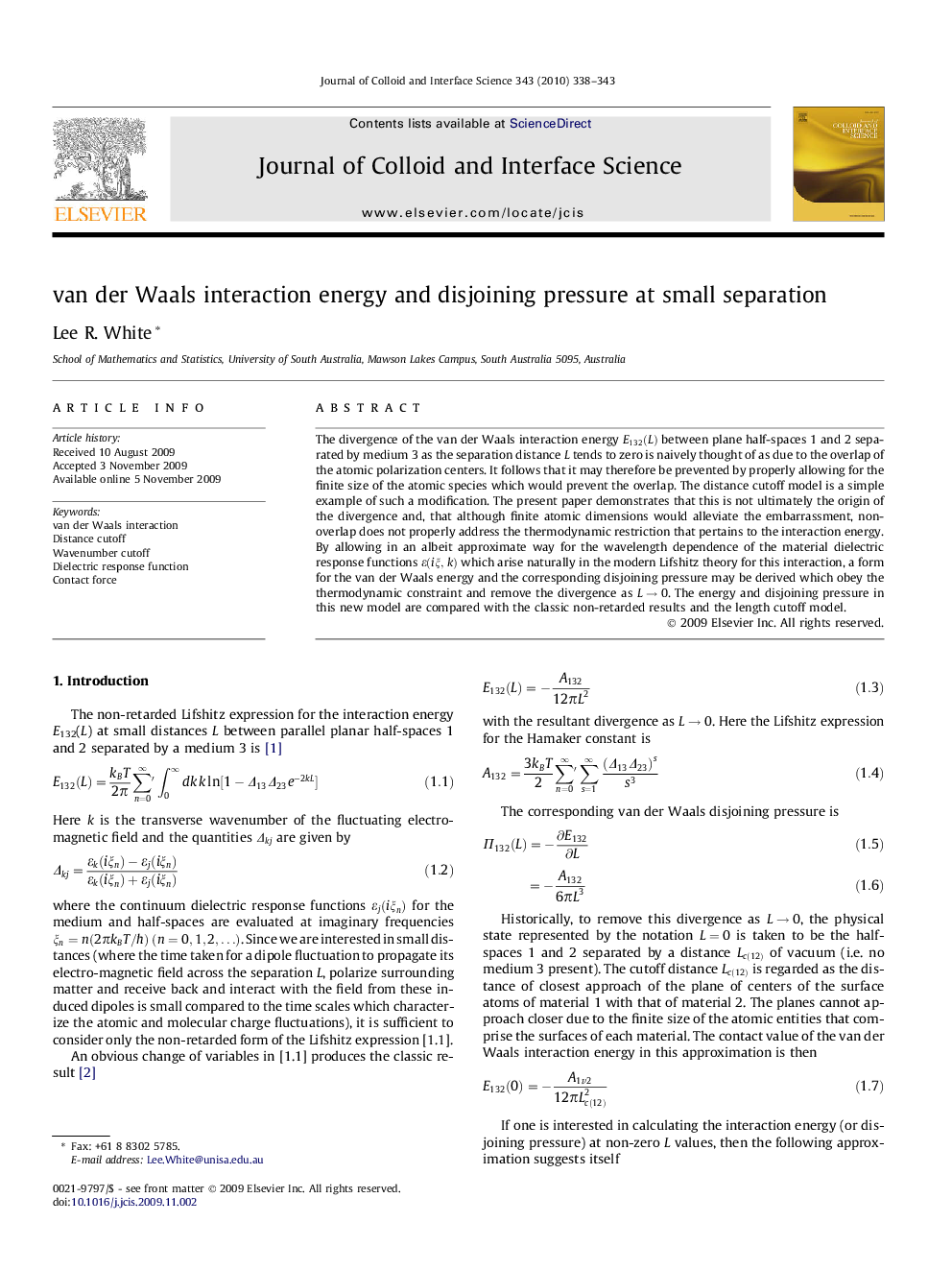| Article ID | Journal | Published Year | Pages | File Type |
|---|---|---|---|---|
| 609446 | Journal of Colloid and Interface Science | 2010 | 6 Pages |
The divergence of the van der Waals interaction energy E132(L)E132(L) between plane half-spaces 1 and 2 separated by medium 3 as the separation distance L tends to zero is naively thought of as due to the overlap of the atomic polarization centers. It follows that it may therefore be prevented by properly allowing for the finite size of the atomic species which would prevent the overlap. The distance cutoff model is a simple example of such a modification. The present paper demonstrates that this is not ultimately the origin of the divergence and, that although finite atomic dimensions would alleviate the embarrassment, non-overlap does not properly address the thermodynamic restriction that pertains to the interaction energy. By allowing in an albeit approximate way for the wavelength dependence of the material dielectric response functions ε(iξ,k) which arise naturally in the modern Lifshitz theory for this interaction, a form for the van der Waals energy and the corresponding disjoining pressure may be derived which obey the thermodynamic constraint and remove the divergence as L→0L→0. The energy and disjoining pressure in this new model are compared with the classic non-retarded results and the length cutoff model.
Graphical abstractScaled van der Waals energy (blue) and disjoining pressure (green) for the finite wavenumber cutoff approximation, compared to the corresponding classical Lifshitz theory results (red, purple) for dodecane/air/dodecane.Figure optionsDownload full-size imageDownload high-quality image (78 K)Download as PowerPoint slide
